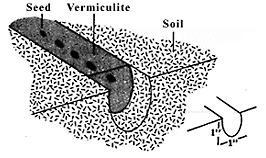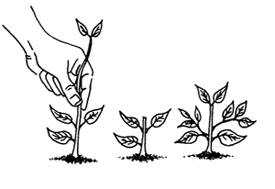
|
|
Home Growing Annuals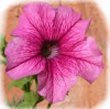 Using annuals in landscape design, how to select transplants and proper
seeding, planting and cultivating methods.
Using annuals in landscape design, how to select transplants and proper
seeding, planting and cultivating methods.
Annuals are non-woody plants that complete their life cycle in one season, ending with seed production. Confusion can arise when an annual plant reseeds itself and appears to have a perennial habit. Use in the LandscapeAnnual flowers can play an important role in a well-designed landscape. Compared to most perennial landscape plants, annuals require higher levels of both maintenance and water, so plant annual beds in easily-accessible areas and near water sources. Concentrate annuals in beds with other annuals or plants with similar water requirements. Planting annuals randomly throughout the landscape not only increases maintenance, but also lessens the plants' aesthetic impact.
Using shades of one color (including white) is also a popular and attractive theme. Another pleasing effect comes from using complementary colors — those colors found directly opposite each other on a color wheel — such as orange and blue or purple and yellow. These combinations form high color contrasts and create a lot of excitement and interest in the landscape. Always be aware of surrounding or backdrop colors to achieve a coordinated overall design. The best way to set off annual flower colors and textures is to provide a simple backdrop of green vegetation. Annuals are an excellent way to draw attention to building and home entrances, walkways and outdoor living spaces and to provide homeowners and visitors with pleasing "up-close" visual and fragrant experiences. Again, it is important to be selective in placing annuals so their ability to draw attention is not diluted.
The style of the annual bed should be compatible with the overall style of your landscape design. A planting can have either a formal or informal design, depending on the arrangement of the planting. Formal designs, for example, tend to be made up of geometric lines and symmetry, with strong focal points that attract the eye. In contrast, informal designs have curved, flowing lines and natural forms, follow natural terrain and create an asymmetrical balance within the planting. Before planting, the physical characteristics of the site must be evaluated. Consider the site's soil type, fertility, drainage and its exposure to sun and wind. Compare site characteristics with specific plant requirements. An annual plant adapted to site conditions grows and flowers more vigorously and has fewer pest problems. Some plants intolerant of heat and sun may perform adequately when planted in part shade. Annual flowers offer flexibility in landscape design. Any planting can be changed each growing season, creating an entirely new design. As a part of their quick change potential, annuals can be used as a temporary solution in a problem site. Seeds and PlantsMany annual flowers, such as marigolds, globe candytuft and zinnias, can be direct-seeded; that is, the seed is planted in the location in which it will grow all season. Others should be started indoors and transplanted outdoors at the appropriate time. Some annuals, such as larkspur, can be fall seeded. Growing seedlings indoors requires proper light and temperature, a pasteurized growing medium and several weeks of careful attention. Because it can be difficult to produce quality transplants at home, many gardeners are better off purchasing transplants. Flower transplants and vegetable transplants are produced using the same methods.
When selecting transplants, look for stocky plants with dense foliage and rich colors. Avoid seedlings that are leggy, yellowish or dry looking. If possible, check the root system. Most healthy plant roots are white; avoid purchasing plants with brown or black roots. While it is tempting to choose blooming plants, it is better to select those that are not. Soil PreparationPrepare an annual bed by digging or rototilling 8 to 12 inches deep. Amend the soil with organic matter, such as well-rotted manure, sphagnum peat moss, compost or leaf mold. Spread 1 or 2 inches of the organic matter over the soil and 1 to 2 pounds of fertilizer, such as 5-10-5, per 100 square feet of bed and incorporate. Do not over-fertilize, which can cause excess foliage growth at the expense of flowers. Rake the bed smooth and remove any stones, clods or old plant debris before planting. Direct-Seeding
Planting Transplants
If you are using plantable peat pots, tear them to allow the roots to easily break through the sides. Also, tear off the top rim of the peat pot. This prevents the peat from being exposed to the air where it will act as a wick and draw moisture away from the soil ball, drying out the plant. Set the plants at the recommended spacing and cover them with soil to the depth of their container. Firm the soil around the roots and water immediately. Most plants respond well to pinching at planting time. Pinching, or removing the early flowers, allows the plant's energy to be used to establish the plant rather than support flowers. Pinching also induces branching which will, eventually, increase the number of flowering stems. For best results, pinch out the first and second set of leaves (Figure 2). MaintenanceAnnual flowers generally require 1 to 1 1/2 inches of water each week. Be sure the water penetrates to the root zone. Generally, hand watering is not adequate to supply sufficient and uniform amounts of water. Soaker hoses or sprinklers are more satisfactory watering methods. Soaker hoses are the most efficient because there is very little runoff, and evaporation and soil compaction are slight. Avoid overhead watering, particularly in the evening. Foliar diseases can be reduced by watering in early morning, rather than at night.An annual flower planting may require additional fertilizer during the growing season. If the soil fertility is low, fertilize plants at a rate of 1/2 to 1 pound of 5-10-5 per 100 square feet every 4 to 6 weeks. Sprinkle the fertilizer lightly along the row and scratch it into the soil.
Pinch off faded blooms at least weekly to stimulate blooming throughout the season. Trailing plants, such as fibrous begonia, petunias, pansies and coleus, can be pruned to keep the plants compact and stimulate additional blooming. Removing faded flowers prevents the plants from forming seed. As a result, they will bloom again in an effort to complete the life cycle. Annual flowers have relatively few insect and disease problems. However, specific problems will characteristically develop on some plants. Maintaining vigorous growth, spacing plants so they receive good air circulation, planting in a site with good drainage and sun exposure suited to the plant will usually reduce disease problems. Quick identification of the problem will minimize pest damage.
|
| Home | Garden Monthly! | Newsletter | About Us | Contact |
|
GardenSimply.com | All Rights Reserved 2005 |

Garden Journal !!Join "Garden Notes" and plan for Harvest Success as you track and record your gardening progress. Your Free Personal Garden Journal includes printable pages making it easy for you to:
|
|
|
|
|
|
|
|
|
|

|
|
|
|
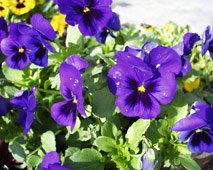 Although annual flowers and plants bring a variety of interesting
textures and forms to the landscape, they are most notable for the
color they provide. Plant simple mixtures of color. Color themes
using related colors, such as red, orange and yellow (warm colors)
or green, blue and purple (cool colors) work well. Warm-colored flowers
bring excitement into the landscape and tend to appear close to the
viewer, making the space in which they are planted feel smaller.
Cool-colored flowers, however, appear more distant, creating a greater
sense of garden space. Cool colors also tend to relax and soothe viewers.
Although annual flowers and plants bring a variety of interesting
textures and forms to the landscape, they are most notable for the
color they provide. Plant simple mixtures of color. Color themes
using related colors, such as red, orange and yellow (warm colors)
or green, blue and purple (cool colors) work well. Warm-colored flowers
bring excitement into the landscape and tend to appear close to the
viewer, making the space in which they are planted feel smaller.
Cool-colored flowers, however, appear more distant, creating a greater
sense of garden space. Cool colors also tend to relax and soothe viewers.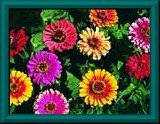 Plant height is another important design consideration. Typically,
a flower border has the tallest plants in the back, medium height
plants in the middle and short plants in the front. An island planting
places the tallest plants in the middle of the bed, surrounded by plants
of decreasing heights.
Plant height is another important design consideration. Typically,
a flower border has the tallest plants in the back, medium height
plants in the middle and short plants in the front. An island planting
places the tallest plants in the middle of the bed, surrounded by plants
of decreasing heights.